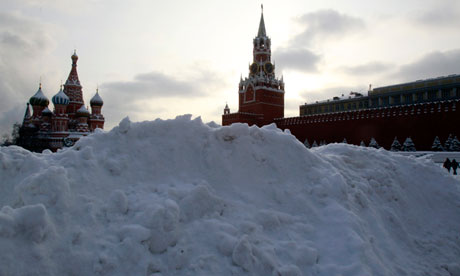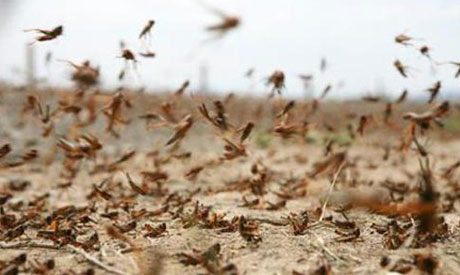March 4, 2013 – EGYPT – Swarms of locusts have been seen in several districts of Cairo on Saturday, including Moqatam and New Cairo. The feared ‘locust plague’ could reach Cairo, after prior sightings were reported along the Red Sea coast and in Upper Egypt. Some citizens burned tires to create a black fog to keep the locusts from settling in the city. Swarms were earlier reported to have reached Egypt’s Red Sea city of Zafarana, some 200 kilometers from Cairo, and then the Upper Egyptian city of Qena where locusts appeared in at least three major villages. There has earlier been reports of a “plague of locusts,” which some experts say could hit Egypt’s Nile Delta. Since January, swarms of the insects — originating from Sudan — have been spotted along the Red Sea coast in south-eastern Egypt, north-eastern Sudan, Eritrea and Saudi Arabia. In 2004, Egypt witnessed one of the most serious locust infestations in recent history, when farmers in 15 out of the country’s 27 governorates suffered extensive crop damage. At the time, the Land Centre for Human Rights, a local NGO devoted to agriculture issues, reported that 38 percent of the nation’s crops had been damaged as a direct result of the arrival of locusts. According to the UN Food and Agriculture Organization (FAO), one ton of locusts eat the same amount of food in a single day as around 2,500 people. –Ahram
Ice World: Record snowfalls inundates cities across the globe
March 4, 2013 – EARTH – This is proving a freakish year for weather, but Japan is having an odder time of it than most. The country has had a record winter for snow, and northern Japan is currently coated by unprecedented volumes of the white stuff – more than five meters at higher altitudes, with houses turned into igloos and roads into snow tunnels. In the Hakkoda Mountains the depth of snow has been measured at 5.61 meters – a record for Japan. Even lower down, in the city of Aomori, snow is standing at almost 1.5 meters and bulldozers have to work round the clock. This has also been a record year for snow in parts of Russia – a couple of weeks ago snow piles of more than five meters caused gridlock in Moscow – and Switzerland, too, has been experiencing dramatic snowfalls, with depths of up to three meters. These snowfalls, especially those in northern Japan, are remarkable by any standards. But they still fall well short of the all-time record-breakers. Tamarack in California claims the record for the deepest snow ever recorded: 11.5 meters on 11 March 1911. That was clearly some year in the Sierra Nevada, as Tamarack also recorded the largest snowfall in a single month in the US: almost 10 meters. -Guardian
 |
Heaped snow in Red Square, Moscow, 21 January 2013. Most of northern Russia was buried in heavy snowfalls this winter. |



No comments:
Post a Comment